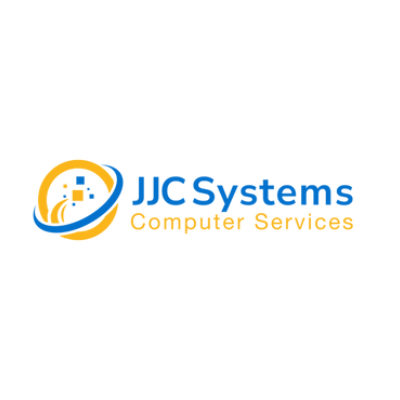Securing the Skull: Applications of Cranial Fixation and Stabilization in Neurosurgery
https://www.marketresearchfuture.com/reports/cranial-fixation-stabilization-market-8163
Cranial fixation and stabilization are not merely mechanical procedures; they are fundamental pillars of modern neurosurgery, enabling surgeons to perform intricate operations on the brain and skull with unparalleled precision and safety. The applications of these techniques are diverse, spanning a wide range of neurological conditions and surgical interventions.
Primary Applications of Cranial Stabilization (Skull Clamps):
The rigid immobilization provided by skull clamp systems is indispensable for almost any open cranial neurosurgical procedure.
Brain Tumor Resection:
Application: For the removal of benign or malignant brain tumors (e.g., gliomas, meningiomas, pituitary adenomas).
Importance: A stable head position allows the neurosurgeon to use a microscope for high magnification, precisely delineate tumor margins, and navigate around critical structures like blood vessels and nerves with extreme accuracy. Neuronavigation systems, which guide the surgeon, rely heavily on the fixed reference point provided by the skull clamp.
Cerebral Aneurysm Clipping:
Application: Surgical treatment of cerebral aneurysms (weak, bulging spots in brain arteries) to prevent rupture or to treat a ruptured aneurysm.
Importance: This is a microvascular surgery demanding absolute stillness. The skull clamp ensures the surgical field remains static while the surgeon meticulously dissects around fragile vessels and places a titanium clip on the aneurysm neck.
Arteriovenous Malformation (AVM) Resection:
Application: Surgical removal of abnormal tangles of blood vessels in the brain or spinal cord that can cause hemorrhage or seizures.
Importance: AVM surgery is complex due to high blood flow and delicate anatomy. Rigid stabilization is critical for precise dissection and occlusion of the feeder vessels.
Traumatic Brain Injury (TBI) Surgery:
Application: For conditions like epidural or subdural hematomas (blood clots outside or under the brain's covering), or for decompressive craniectomy (removing a piece of skull to relieve brain swelling).
Importance: Ensures rapid, safe access to the injured brain and allows for meticulous repair.
Epilepsy Surgery:
Application: Resection of seizure-generating brain tissue.
Importance: Precise localization and removal of specific brain regions necessitate rigid head fixation.
Functional Neurosurgery:
Application: Procedures like Deep Brain Stimulation (DBS) for Parkinson's disease or essential tremor, where electrodes are implanted into specific brain nuclei.
Importance: Extreme accuracy in electrode placement, often down to sub-millimeter precision, is achieved only with complete head immobilization and stereotactic guidance.
Primary Applications of Cranial Fixation (Plates, Screws, Clamps):
Once a craniotomy is performed, or a skull fracture needs repair, the bone flap or fractured segment must be securely reattached.
Craniotomy Closure:
Application: The most common use, where the bone flap removed during procedures like tumor surgery or aneurysm clipping is put back in place.
Importance: Ensures rigid and stable re-approximation of the bone, protecting the brain from external injury, restoring skull contour, and facilitating proper bone healing. This also has significant cosmetic implications.
Skull Fracture Repair:
Application: Stabilizing displaced or comminuted (shattered) skull fractures, particularly those that are depressed or involve significant bone loss.
Importance: Prevents further brain injury from bone fragments, reduces infection risk (by closing open fractures), and restores skull integrity.
Cranioplasty:
Application: Reconstruction of cranial defects resulting from trauma, previous surgery (e.g., decompressive craniectomy), infection, or congenital conditions. This often involves the use of custom-made implants (e.g., PEEK or titanium) to replace the missing bone.
Importance: Protects the underlying brain, improves cerebrospinal fluid dynamics, and provides significant cosmetic restoration. Fixation devices secure these implants to the surrounding native skull.
Pediatric Neurosurgery:
Application: For conditions like craniosynostosis (premature fusion of skull sutures), where the skull is reshaped, or for tumor resections.
Importance: The use of resorbable fixation systems is particularly valuable here, as they allow for the continued growth of the child's skull without the need for future implant removal.
In all these applications, the synergistic use of advanced imaging, neuronavigation, and robust cranial fixation/stabilization systems has dramatically improved the safety, efficacy, and precision of neurosurgical interventions, leading to better patient outcomes and a quicker return to normal life.
https://www.marketresearchfuture.com/reports/cranial-fixation-stabilization-market-8163
Cranial fixation and stabilization are not merely mechanical procedures; they are fundamental pillars of modern neurosurgery, enabling surgeons to perform intricate operations on the brain and skull with unparalleled precision and safety. The applications of these techniques are diverse, spanning a wide range of neurological conditions and surgical interventions.
Primary Applications of Cranial Stabilization (Skull Clamps):
The rigid immobilization provided by skull clamp systems is indispensable for almost any open cranial neurosurgical procedure.
Brain Tumor Resection:
Application: For the removal of benign or malignant brain tumors (e.g., gliomas, meningiomas, pituitary adenomas).
Importance: A stable head position allows the neurosurgeon to use a microscope for high magnification, precisely delineate tumor margins, and navigate around critical structures like blood vessels and nerves with extreme accuracy. Neuronavigation systems, which guide the surgeon, rely heavily on the fixed reference point provided by the skull clamp.
Cerebral Aneurysm Clipping:
Application: Surgical treatment of cerebral aneurysms (weak, bulging spots in brain arteries) to prevent rupture or to treat a ruptured aneurysm.
Importance: This is a microvascular surgery demanding absolute stillness. The skull clamp ensures the surgical field remains static while the surgeon meticulously dissects around fragile vessels and places a titanium clip on the aneurysm neck.
Arteriovenous Malformation (AVM) Resection:
Application: Surgical removal of abnormal tangles of blood vessels in the brain or spinal cord that can cause hemorrhage or seizures.
Importance: AVM surgery is complex due to high blood flow and delicate anatomy. Rigid stabilization is critical for precise dissection and occlusion of the feeder vessels.
Traumatic Brain Injury (TBI) Surgery:
Application: For conditions like epidural or subdural hematomas (blood clots outside or under the brain's covering), or for decompressive craniectomy (removing a piece of skull to relieve brain swelling).
Importance: Ensures rapid, safe access to the injured brain and allows for meticulous repair.
Epilepsy Surgery:
Application: Resection of seizure-generating brain tissue.
Importance: Precise localization and removal of specific brain regions necessitate rigid head fixation.
Functional Neurosurgery:
Application: Procedures like Deep Brain Stimulation (DBS) for Parkinson's disease or essential tremor, where electrodes are implanted into specific brain nuclei.
Importance: Extreme accuracy in electrode placement, often down to sub-millimeter precision, is achieved only with complete head immobilization and stereotactic guidance.
Primary Applications of Cranial Fixation (Plates, Screws, Clamps):
Once a craniotomy is performed, or a skull fracture needs repair, the bone flap or fractured segment must be securely reattached.
Craniotomy Closure:
Application: The most common use, where the bone flap removed during procedures like tumor surgery or aneurysm clipping is put back in place.
Importance: Ensures rigid and stable re-approximation of the bone, protecting the brain from external injury, restoring skull contour, and facilitating proper bone healing. This also has significant cosmetic implications.
Skull Fracture Repair:
Application: Stabilizing displaced or comminuted (shattered) skull fractures, particularly those that are depressed or involve significant bone loss.
Importance: Prevents further brain injury from bone fragments, reduces infection risk (by closing open fractures), and restores skull integrity.
Cranioplasty:
Application: Reconstruction of cranial defects resulting from trauma, previous surgery (e.g., decompressive craniectomy), infection, or congenital conditions. This often involves the use of custom-made implants (e.g., PEEK or titanium) to replace the missing bone.
Importance: Protects the underlying brain, improves cerebrospinal fluid dynamics, and provides significant cosmetic restoration. Fixation devices secure these implants to the surrounding native skull.
Pediatric Neurosurgery:
Application: For conditions like craniosynostosis (premature fusion of skull sutures), where the skull is reshaped, or for tumor resections.
Importance: The use of resorbable fixation systems is particularly valuable here, as they allow for the continued growth of the child's skull without the need for future implant removal.
In all these applications, the synergistic use of advanced imaging, neuronavigation, and robust cranial fixation/stabilization systems has dramatically improved the safety, efficacy, and precision of neurosurgical interventions, leading to better patient outcomes and a quicker return to normal life.
Securing the Skull: Applications of Cranial Fixation and Stabilization in Neurosurgery
https://www.marketresearchfuture.com/reports/cranial-fixation-stabilization-market-8163
Cranial fixation and stabilization are not merely mechanical procedures; they are fundamental pillars of modern neurosurgery, enabling surgeons to perform intricate operations on the brain and skull with unparalleled precision and safety. The applications of these techniques are diverse, spanning a wide range of neurological conditions and surgical interventions.
Primary Applications of Cranial Stabilization (Skull Clamps):
The rigid immobilization provided by skull clamp systems is indispensable for almost any open cranial neurosurgical procedure.
Brain Tumor Resection:
Application: For the removal of benign or malignant brain tumors (e.g., gliomas, meningiomas, pituitary adenomas).
Importance: A stable head position allows the neurosurgeon to use a microscope for high magnification, precisely delineate tumor margins, and navigate around critical structures like blood vessels and nerves with extreme accuracy. Neuronavigation systems, which guide the surgeon, rely heavily on the fixed reference point provided by the skull clamp.
Cerebral Aneurysm Clipping:
Application: Surgical treatment of cerebral aneurysms (weak, bulging spots in brain arteries) to prevent rupture or to treat a ruptured aneurysm.
Importance: This is a microvascular surgery demanding absolute stillness. The skull clamp ensures the surgical field remains static while the surgeon meticulously dissects around fragile vessels and places a titanium clip on the aneurysm neck.
Arteriovenous Malformation (AVM) Resection:
Application: Surgical removal of abnormal tangles of blood vessels in the brain or spinal cord that can cause hemorrhage or seizures.
Importance: AVM surgery is complex due to high blood flow and delicate anatomy. Rigid stabilization is critical for precise dissection and occlusion of the feeder vessels.
Traumatic Brain Injury (TBI) Surgery:
Application: For conditions like epidural or subdural hematomas (blood clots outside or under the brain's covering), or for decompressive craniectomy (removing a piece of skull to relieve brain swelling).
Importance: Ensures rapid, safe access to the injured brain and allows for meticulous repair.
Epilepsy Surgery:
Application: Resection of seizure-generating brain tissue.
Importance: Precise localization and removal of specific brain regions necessitate rigid head fixation.
Functional Neurosurgery:
Application: Procedures like Deep Brain Stimulation (DBS) for Parkinson's disease or essential tremor, where electrodes are implanted into specific brain nuclei.
Importance: Extreme accuracy in electrode placement, often down to sub-millimeter precision, is achieved only with complete head immobilization and stereotactic guidance.
Primary Applications of Cranial Fixation (Plates, Screws, Clamps):
Once a craniotomy is performed, or a skull fracture needs repair, the bone flap or fractured segment must be securely reattached.
Craniotomy Closure:
Application: The most common use, where the bone flap removed during procedures like tumor surgery or aneurysm clipping is put back in place.
Importance: Ensures rigid and stable re-approximation of the bone, protecting the brain from external injury, restoring skull contour, and facilitating proper bone healing. This also has significant cosmetic implications.
Skull Fracture Repair:
Application: Stabilizing displaced or comminuted (shattered) skull fractures, particularly those that are depressed or involve significant bone loss.
Importance: Prevents further brain injury from bone fragments, reduces infection risk (by closing open fractures), and restores skull integrity.
Cranioplasty:
Application: Reconstruction of cranial defects resulting from trauma, previous surgery (e.g., decompressive craniectomy), infection, or congenital conditions. This often involves the use of custom-made implants (e.g., PEEK or titanium) to replace the missing bone.
Importance: Protects the underlying brain, improves cerebrospinal fluid dynamics, and provides significant cosmetic restoration. Fixation devices secure these implants to the surrounding native skull.
Pediatric Neurosurgery:
Application: For conditions like craniosynostosis (premature fusion of skull sutures), where the skull is reshaped, or for tumor resections.
Importance: The use of resorbable fixation systems is particularly valuable here, as they allow for the continued growth of the child's skull without the need for future implant removal.
In all these applications, the synergistic use of advanced imaging, neuronavigation, and robust cranial fixation/stabilization systems has dramatically improved the safety, efficacy, and precision of neurosurgical interventions, leading to better patient outcomes and a quicker return to normal life.
0 Comments
0 Shares










